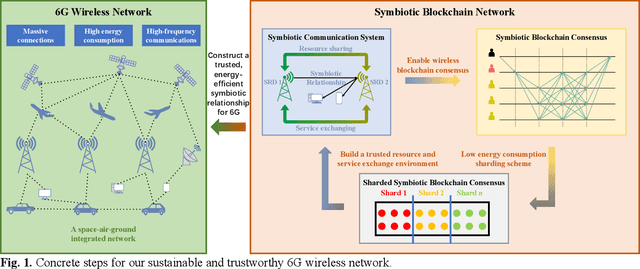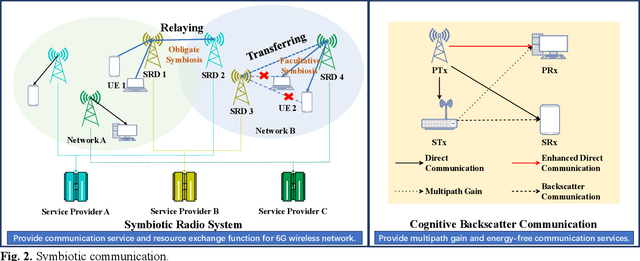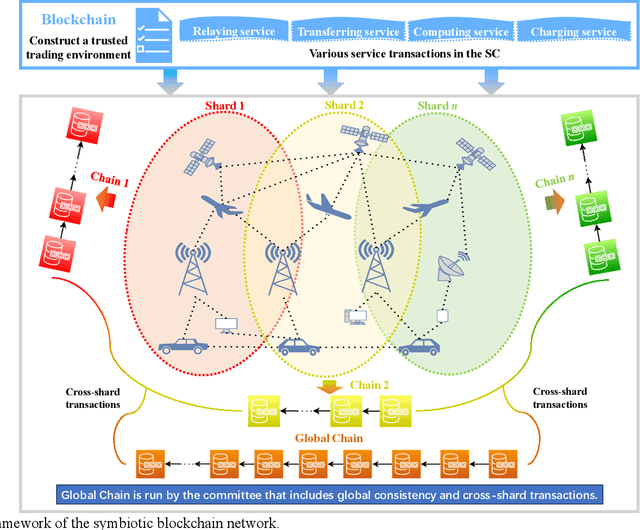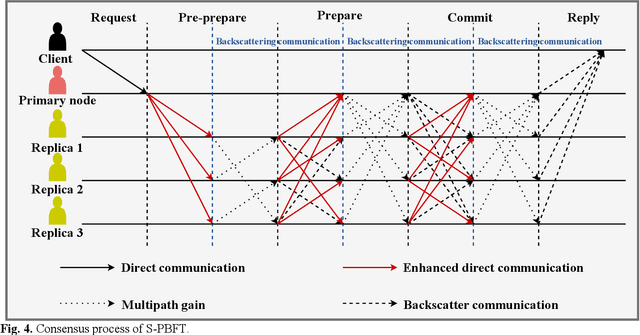Cheng Chi
RoboBrain 2.0 Technical Report
Jul 02, 2025Abstract:We introduce RoboBrain 2.0, our latest generation of embodied vision-language foundation models, designed to unify perception, reasoning, and planning for complex embodied tasks in physical environments. It comes in two variants: a lightweight 7B model and a full-scale 32B model, featuring a heterogeneous architecture with a vision encoder and a language model. Despite its compact size, RoboBrain 2.0 achieves strong performance across a wide spectrum of embodied reasoning tasks. On both spatial and temporal benchmarks, the 32B variant achieves leading results, surpassing prior open-source and proprietary models. In particular, it supports key real-world embodied AI capabilities, including spatial understanding (e.g., affordance prediction, spatial referring, trajectory forecasting) and temporal decision-making (e.g., closed-loop interaction, multi-agent long-horizon planning, and scene graph updating). This report details the model architecture, data construction, multi-stage training strategies, infrastructure and practical applications. We hope RoboBrain 2.0 advances embodied AI research and serves as a practical step toward building generalist embodied agents. The code, checkpoint and benchmark are available at https://superrobobrain.github.io.
RoboRefer: Towards Spatial Referring with Reasoning in Vision-Language Models for Robotics
Jun 04, 2025Abstract:Spatial referring is a fundamental capability of embodied robots to interact with the 3D physical world. However, even with the powerful pretrained vision language models (VLMs), recent approaches are still not qualified to accurately understand the complex 3D scenes and dynamically reason about the instruction-indicated locations for interaction. To this end, we propose RoboRefer, a 3D-aware VLM that can first achieve precise spatial understanding by integrating a disentangled but dedicated depth encoder via supervised fine-tuning (SFT). Moreover, RoboRefer advances generalized multi-step spatial reasoning via reinforcement fine-tuning (RFT), with metric-sensitive process reward functions tailored for spatial referring tasks. To support SFT and RFT training, we introduce RefSpatial, a large-scale dataset of 20M QA pairs (2x prior), covering 31 spatial relations (vs. 15 prior) and supporting complex reasoning processes (up to 5 steps). In addition, we introduce RefSpatial-Bench, a challenging benchmark filling the gap in evaluating spatial referring with multi-step reasoning. Experiments show that SFT-trained RoboRefer achieves state-of-the-art spatial understanding, with an average success rate of 89.6%. RFT-trained RoboRefer further outperforms all other baselines by a large margin, even surpassing Gemini-2.5-Pro by 17.4% in average accuracy on RefSpatial-Bench. Notably, RoboRefer can be integrated with various control policies to execute long-horizon, dynamic tasks across diverse robots (e,g., UR5, G1 humanoid) in cluttered real-world scenes.
Uni-Gaussians: Unifying Camera and Lidar Simulation with Gaussians for Dynamic Driving Scenarios
Mar 11, 2025Abstract:Ensuring the safety of autonomous vehicles necessitates comprehensive simulation of multi-sensor data, encompassing inputs from both cameras and LiDAR sensors, across various dynamic driving scenarios. Neural rendering techniques, which utilize collected raw sensor data to simulate these dynamic environments, have emerged as a leading methodology. While NeRF-based approaches can uniformly represent scenes for rendering data from both camera and LiDAR, they are hindered by slow rendering speeds due to dense sampling. Conversely, Gaussian Splatting-based methods employ Gaussian primitives for scene representation and achieve rapid rendering through rasterization. However, these rasterization-based techniques struggle to accurately model non-linear optical sensors. This limitation restricts their applicability to sensors beyond pinhole cameras. To address these challenges and enable unified representation of dynamic driving scenarios using Gaussian primitives, this study proposes a novel hybrid approach. Our method utilizes rasterization for rendering image data while employing Gaussian ray-tracing for LiDAR data rendering. Experimental results on public datasets demonstrate that our approach outperforms current state-of-the-art methods. This work presents a unified and efficient solution for realistic simulation of camera and LiDAR data in autonomous driving scenarios using Gaussian primitives, offering significant advancements in both rendering quality and computational efficiency.
The AI Black-Scholes: Finance-Informed Neural Network
Dec 15, 2024Abstract:In the realm of option pricing, existing models are typically classified into principle-driven methods, such as solving partial differential equations (PDEs) that pricing function satisfies, and data-driven approaches, such as machine learning (ML) techniques that parameterize the pricing function directly. While principle-driven models offer a rigorous theoretical framework, they often rely on unrealistic assumptions, such as asset processes adhering to fixed stochastic differential equations (SDEs). Moreover, they can become computationally intensive, particularly in high-dimensional settings when analytical solutions are not available and thus numerical solutions are needed. In contrast, data-driven models excel in capturing market data trends, but they often lack alignment with core financial principles, raising concerns about interpretability and predictive accuracy, especially when dealing with limited or biased datasets. This work proposes a hybrid approach to address these limitations by integrating the strengths of both principled and data-driven methodologies. Our framework combines the theoretical rigor and interpretability of PDE-based models with the adaptability of machine learning techniques, yielding a more versatile methodology for pricing a broad spectrum of options. We validate our approach across different volatility modeling approaches-both with constant volatility (Black-Scholes) and stochastic volatility (Heston), demonstrating that our proposed framework, Finance-Informed Neural Network (FINN), not only enhances predictive accuracy but also maintains adherence to core financial principles. FINN presents a promising tool for practitioners, offering robust performance across a variety of market conditions.
Code-as-Monitor: Constraint-aware Visual Programming for Reactive and Proactive Robotic Failure Detection
Dec 05, 2024



Abstract:Automatic detection and prevention of open-set failures are crucial in closed-loop robotic systems. Recent studies often struggle to simultaneously identify unexpected failures reactively after they occur and prevent foreseeable ones proactively. To this end, we propose Code-as-Monitor (CaM), a novel paradigm leveraging the vision-language model (VLM) for both open-set reactive and proactive failure detection. The core of our method is to formulate both tasks as a unified set of spatio-temporal constraint satisfaction problems and use VLM-generated code to evaluate them for real-time monitoring. To enhance the accuracy and efficiency of monitoring, we further introduce constraint elements that abstract constraint-related entities or their parts into compact geometric elements. This approach offers greater generality, simplifies tracking, and facilitates constraint-aware visual programming by leveraging these elements as visual prompts. Experiments show that CaM achieves a 28.7% higher success rate and reduces execution time by 31.8% under severe disturbances compared to baselines across three simulators and a real-world setting. Moreover, CaM can be integrated with open-loop control policies to form closed-loop systems, enabling long-horizon tasks in cluttered scenes with dynamic environments.
Adaptive Compliance Policy: Learning Approximate Compliance for Diffusion Guided Control
Oct 12, 2024



Abstract:Compliance plays a crucial role in manipulation, as it balances between the concurrent control of position and force under uncertainties. Yet compliance is often overlooked by today's visuomotor policies that solely focus on position control. This paper introduces Adaptive Compliance Policy (ACP), a novel framework that learns to dynamically adjust system compliance both spatially and temporally for given manipulation tasks from human demonstrations, improving upon previous approaches that rely on pre-selected compliance parameters or assume uniform constant stiffness. However, computing full compliance parameters from human demonstrations is an ill-defined problem. Instead, we estimate an approximate compliance profile with two useful properties: avoiding large contact forces and encouraging accurate tracking. Our approach enables robots to handle complex contact-rich manipulation tasks and achieves over 50\% performance improvement compared to state-of-the-art visuomotor policy methods. For result videos, see https://adaptive-compliance.github.io/
Array2BR: An End-to-End Noise-immune Binaural Audio Synthesis from Microphone-array Signals
Oct 08, 2024



Abstract:Telepresence technology aims to provide an immersive virtual presence for remote conference applications, and it is extremely important to synthesize high-quality binaural audio signals for this aim. Because the ambient noise is often inevitable in practical application scenarios, it is highly desired that binaural audio signals without noise can be obtained from microphone-array signals directly. For this purpose, this paper proposes a new end-to-end noise-immune binaural audio synthesis framework from microphone-array signals, abbreviated as Array2BR, and experimental results show that binaural cues can be correctly mapped and noise can be well suppressed simultaneously using the proposed framework. Compared with existing methods, the proposed method achieved better performance in terms of both objective and subjective metric scores.
Convergence of Symbiotic Communications and Blockchain for Sustainable and Trustworthy 6G Wireless Networks
Aug 11, 2024



Abstract:Symbiotic communication (SC) is known as a new wireless communication paradigm, similar to the natural ecosystem population, and can enable multiple communication systems to cooperate and mutualize through service exchange and resource sharing. As a result, SC is seen as an important potential technology for future sixth-generation (6G) communications, solving the problem of lack of spectrum resources and energy inefficiency. Symbiotic relationships among communication systems can complement radio resources in 6G. However, the absence of established trust relationships among diverse communication systems presents a formidable hurdle in ensuring efficient and trusted resource and service exchange within SC frameworks. To better realize trusted SC services in 6G, in this paper, we propose a solution that converges SC and blockchain, called a symbiotic blockchain network (SBN). Specifically, we first use cognitive backscatter communication to transform blockchain consensus, that is, the symbiotic blockchain consensus (SBC), so that it can be better suited for the wireless network. Then, for SBC, we propose a highly energy-efficient sharding scheme to meet the extremely low power consumption requirements in 6G. Finally, such a blockchain scheme guarantees trusted transactions of communication services in SC. Through ablation experiments, our proposed SBN demonstrates significant efficacy in mitigating energy consumption and reducing processing latency in adversarial networks, which is expected to achieve a sustainable and trusted 6G wireless network.
RALTPER: A Risk-Aware Local Trajectory Planner for Complex Environment with Gaussian Uncertainty
Aug 11, 2024Abstract:In this paper, we propose a novel Risk-Aware Local Trajectory Planner (RALTPER) for autonomous vehicles in complex environments characterized by Gaussian uncertainty. The proposed method integrates risk awareness and trajectory planning by leveraging probabilistic models to evaluate the likelihood of collisions with dynamic and static obstacles. The RALTPER focuses on collision avoidance constraints for both the ego vehicle region and the Gaussian-obstacle risk region. Additionally, this work enhances the generalization of both vehicle and obstacle models, making the planner adaptable to a wider range of scenarios. Our approach formulates the planning problem as a nonlinear optimization, solved using the IPOPT solver within the CasADi environment. The planner is evaluated through simulations of various challenging scenarios, including complex, static, mixed environment and narrow single-lane avoidance of pedestrians. Results demonstrate that RALTPER achieves safer and more efficient trajectory planning particularly in navigating narrow areas where a more accurate vehicle profile representation is critical for avoiding collisions.
Flow as the Cross-Domain Manipulation Interface
Jul 21, 2024Abstract:We present Im2Flow2Act, a scalable learning framework that enables robots to acquire manipulation skills from diverse data sources. The key idea behind Im2Flow2Act is to use object flow as the manipulation interface, bridging domain gaps between different embodiments (i.e., human and robot) and training environments (i.e., real-world and simulated). Im2Flow2Act comprises two components: a flow generation network and a flow-conditioned policy. The flow generation network, trained on human demonstration videos, generates object flow from the initial scene image, conditioned on the task description. The flow-conditioned policy, trained on simulated robot play data, maps the generated object flow to robot actions to realize the desired object movements. By using flow as input, this policy can be directly deployed in the real world with a minimal sim-to-real gap. By leveraging real-world human videos and simulated robot play data, we bypass the challenges of teleoperating physical robots in the real world, resulting in a scalable system for diverse tasks. We demonstrate Im2Flow2Act's capabilities in a variety of real-world tasks, including the manipulation of rigid, articulated, and deformable objects.
 Add to Chrome
Add to Chrome Add to Firefox
Add to Firefox Add to Edge
Add to Edge